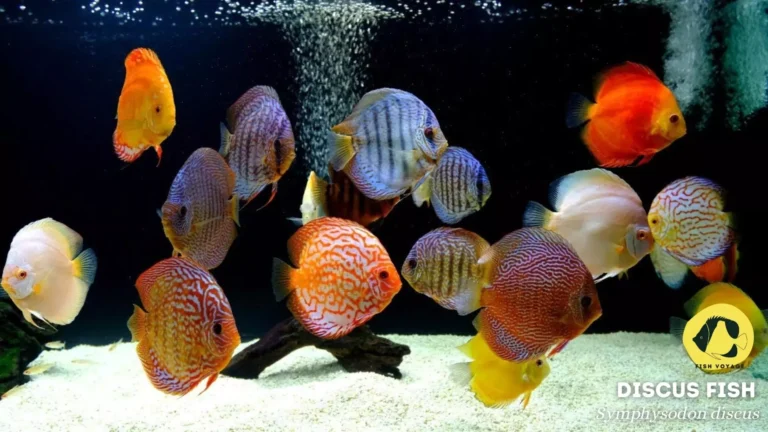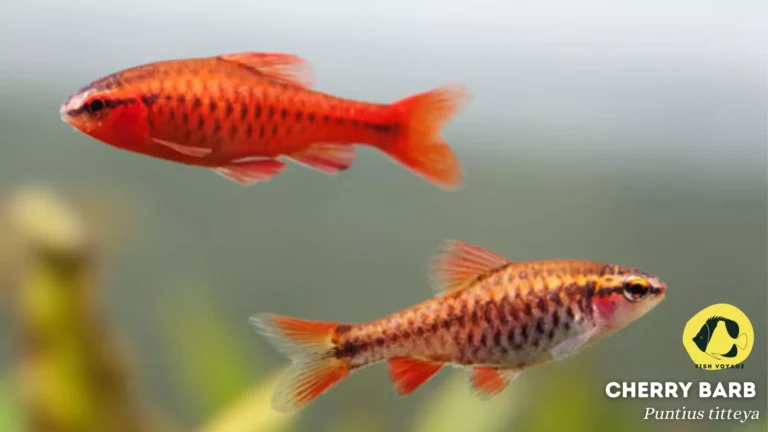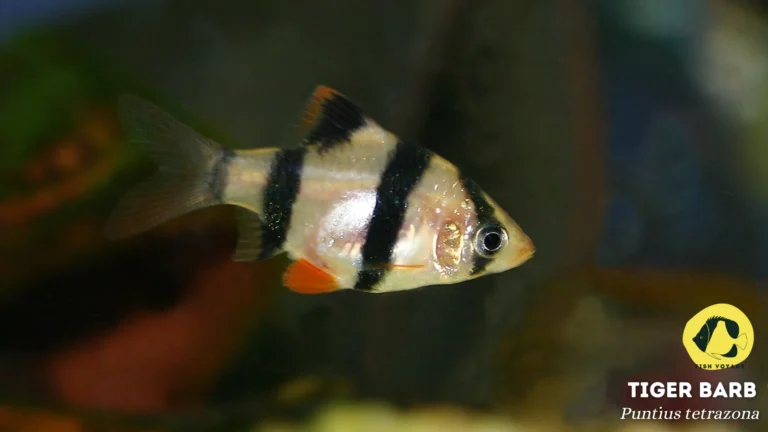Little Tetras: Everything You Need to Know!
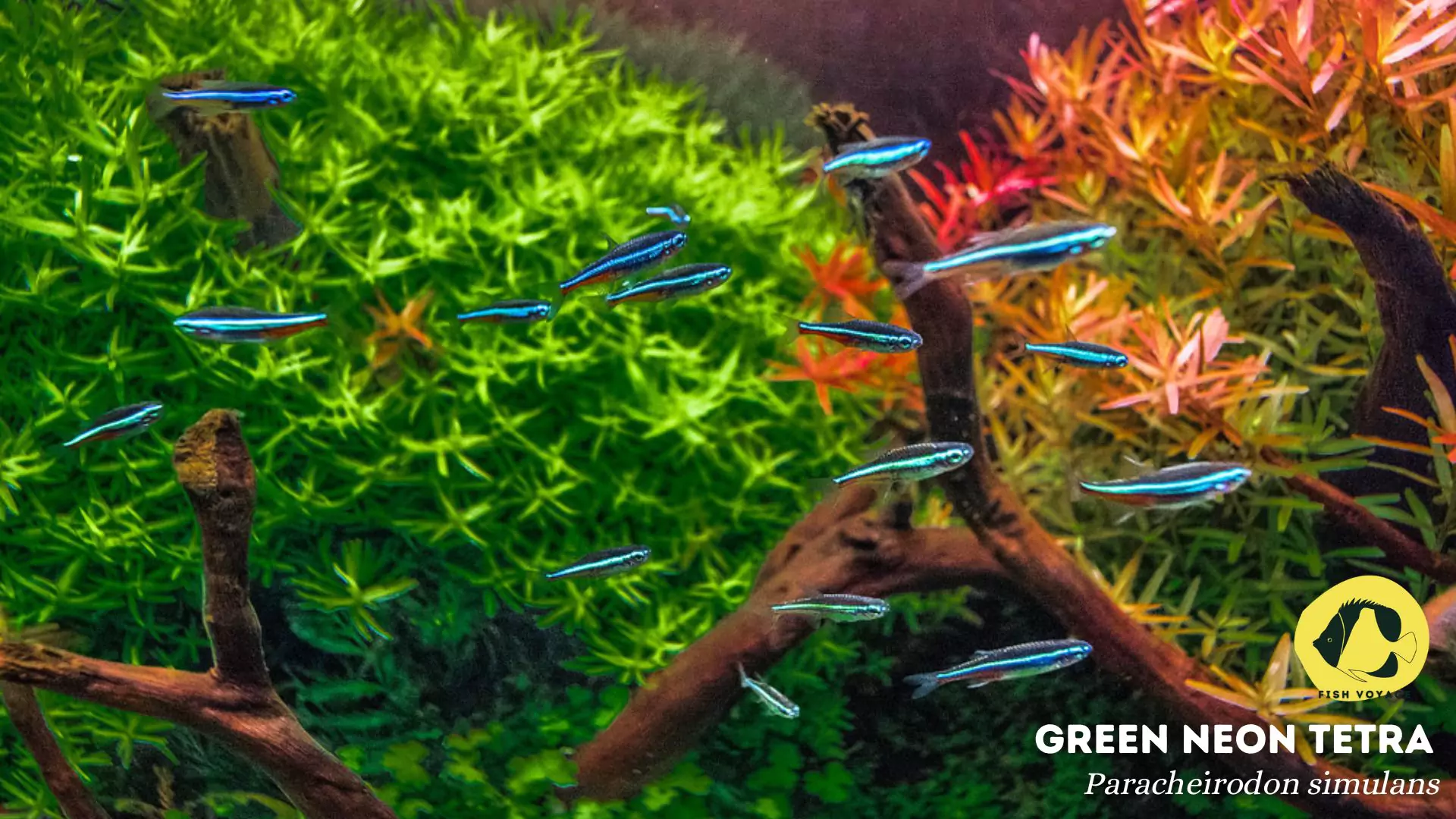
In the enchanting world of aquarium keeping, “Little Tetras” emerge as captivating jewels that have captured the hearts of hobbyists worldwide. Tetras, renowned for their vibrant hues and lively personalities, hold a revered status in the aquarium community. However, it is the diminutive members of this family that truly steal the spotlight. Small tetra species, characterized by their petite size and intricate coloration, have become the darlings of aquarists seeking to add a touch of elegance to their aquatic sanctuaries. This blog post delves into the allure of these tiny treasures, exploring the reasons behind their popularity and shedding light on the unique charm they bring to aquariums of all sizes.
The Appeal of Little Tetras
Captivating Aesthetics
Little Tetras, with their petite stature, offer aquarists a visual feast of vibrant colors and intricate patterns. Their diminutive size does not compromise the brilliance of their hues; instead, it enhances the charm, making them living canvases that bring aquariums to life.
Ideal for Small Spaces
The allure of small tetra species extends beyond their visual appeal to their practicality. These charming fish are perfectly suited for compact tanks, making them an excellent choice for hobbyists with limited space. Whether you’re a beginner or a seasoned enthusiast, integrating little tetras into smaller setups allows for a captivating aquatic experience without the need for expansive aquariums.
Harmony in Community Tanks
One of the key attractions of little tetras lies in their amicable nature. These social beings thrive in community setups, fostering harmony among tankmates. Their peaceful demeanor and compatibility with a variety of other fish species create an aquarium environment that mirrors the diversity and balance found in natural aquatic ecosystems.
Schooling Beauty
Small tetra species often exhibit delightful schooling behavior, creating mesmerizing displays as they gracefully navigate the aquarium. The unity of their movements and the shimmering reflections of their colors add an enchanting dynamic to the aquatic landscape, captivating both seasoned aquarists and newcomers alike.
Low Maintenance, High Reward
Beyond their visual and behavioral appeal, little tetras are known for their hardiness and adaptability. These attributes make them an excellent choice for aquarists seeking low-maintenance yet visually rewarding additions to their tanks. Their ability to thrive in a range of water conditions adds to their popularity among those looking for resilient and captivating aquatic companions.
In essence, the appeal of little tetras goes beyond their small size; it encompasses a harmonious blend of aesthetic beauty, practicality, and social compatibility, making them a delightful choice for aquarium enthusiasts of all levels.
Popular Species of Little Tetras
Ember Tetra (Hyphessobrycon amandae)
- Size: Growing to a modest 1 inch, Ember Tetras exhibit vibrant reddish-orange hues, resembling flickering embers.
- Behavior: These social fish thrive in schools, creating a visually stunning spectacle as they navigate the tank. Despite their small size, Ember Tetras are known for their energetic and playful behavior.
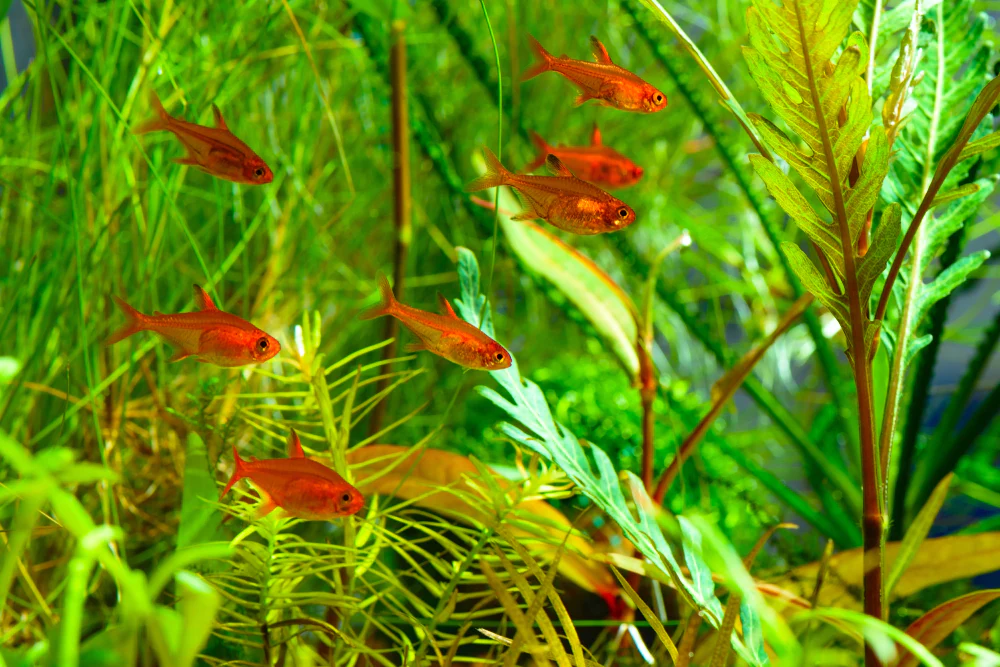
Neon Tetra (Paracheirodon innesi)
- Size: With a length of around 1.5 inches, Neon Tetras are prized for their iridescent blue and red stripes that traverse their slender bodies.
- Behavior: Displaying a calm and non-aggressive temperament, Neon Tetras are excellent community fish. They often school together, creating a captivating visual display.

Green Neon Tetra (Paracheirodon simulans)
- Size: Slightly smaller than their Neon Tetra counterparts, Green Neon Tetras reach around 1 inch in length. They boast a striking green-blue stripe that runs horizontally across their bodies.
- Behavior: These tetras are known for their peaceful nature, making them suitable for community tanks. Their schooling behavior adds a dynamic element to the aquarium.
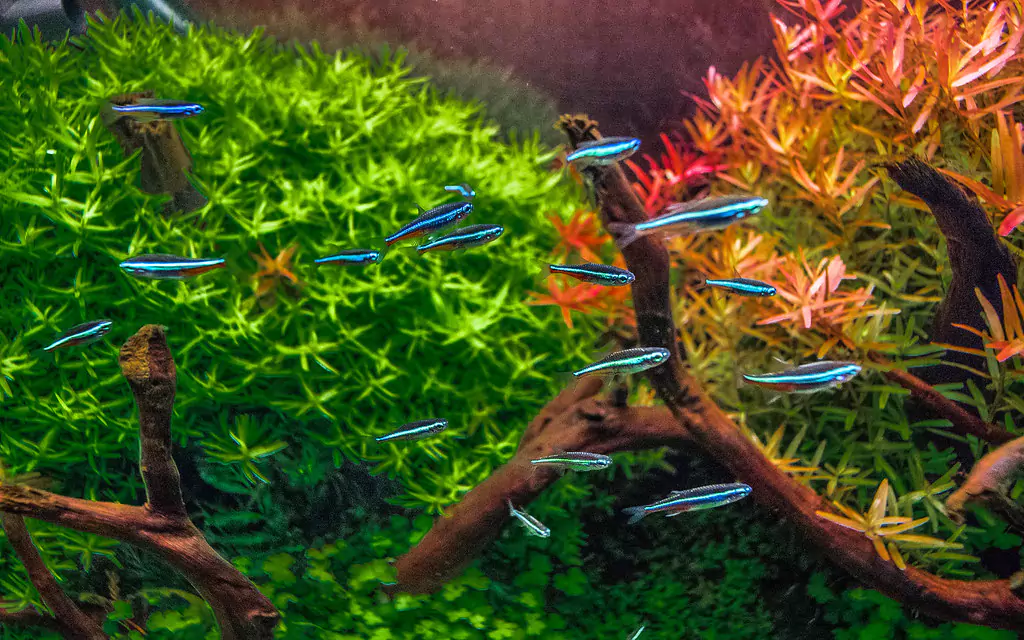
Cherry Barb (Puntius titteya)
- Size: Cherry Barbs, while not traditional tetras, are noteworthy for their manageable size of around 2 inches. Males exhibit vibrant red coloring, adding a splash of vivid hues to the tank.
- Behavior: Cherry Barbs are known for their active and social behavior. They are generally peaceful but can display slight aggression during breeding periods.

Celestial Pearl Danio (Danio margaritatus)
- Size: Despite their small size of around 1 inch, Celestial Pearl Danios boast stunning celestial-like patterns on their bodies.
- Behavior: These danios are known for their lively and active nature. They prefer a well-planted aquarium and can coexist peacefully with other small, non-aggressive species.
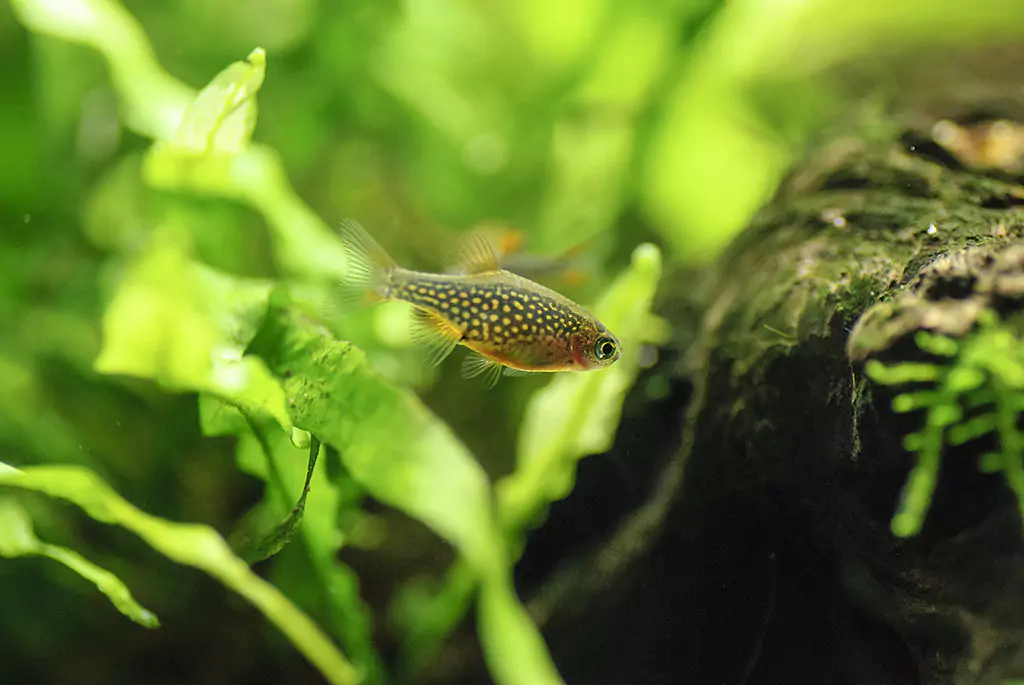
Incorporating these charming small tetra species into your aquarium not only adds visual appeal but also introduces a dynamic and harmonious aquatic community. Remember to provide appropriate tank conditions, including well-maintained water parameters and suitable tankmates, to ensure the well-being of these delightful aquatic companions.
Setting Up a Little Tetra Aquarium
Selecting the Right Tank Size
- Opt for a tank with a minimum capacity of 10 to 20 gallons for small tetras, ensuring ample space for swimming and schooling behavior.
- Consider the dimensions of the tank, as some tetras prefer longer tanks to accommodate their horizontal swimming patterns.
Maintaining Optimal Water Parameters
- Keep the water temperature between 72°F to 78°F to mimic the natural habitats of most small tetras.
- Maintain a slightly acidic to neutral pH level ranging from 6.0 to 7.0, providing an environment conducive to their well-being.
Creating a Well-Planted Environment
- Introduce live or artificial plants to replicate the tetras’ natural habitat, offering hiding spots and creating a visually appealing landscape.
- Consider plants like Java Moss, Anubias, and Amazon Sword, which not only enhance aesthetics but also provide shelter.
Appropriate Lighting
- Provide subdued lighting to emulate the dappled sunlight found in their native environments.
- Avoid intense lighting, as small tetras, especially those with vibrant colors, may feel stressed in overly bright conditions.
Filtration and Water Quality
- Invest in a reliable filtration system to maintain water clarity and remove debris.
- Perform regular water changes, aiming for 10-20% of the tank volume every 1-2 weeks, to ensure optimal water quality.
Selecting Compatible Tank Mates
- Choose peaceful tank mates that share similar water parameter requirements.
- Consider species like small rasboras, dwarf corydoras, and non-aggressive shrimp to create a harmonious community.
Potential Challenges and Solutions
- Watch for signs of stress or illness, such as lethargy or changes in coloration.
- Quarantine new additions before introducing them to the main tank to prevent the spread of potential diseases.
Avoiding Aggressive Tank Mates
- Steer clear of aggressive or territorial fish that may intimidate or harm small tetras.
- Monitor interactions closely, especially during feeding, to ensure a peaceful coexistence.
Creating an ideal habitat for your little tetras involves careful consideration of tank size, water conditions, and compatible tank mates. By providing a well-planted and thoughtfully designed environment, you not only enhance the visual appeal of your aquarium but also contribute to the health and happiness of these charming aquatic companions.
Feeding and Care
Balanced Diet for Optimal Health
- Offer a well-rounded diet that includes high-quality flake, pellet, and granule foods specifically formulated for small tetras.
- Supplement their diet with frozen or live foods such as brine shrimp, daphnia, and bloodworms to mimic their natural foraging behavior.
Feeding Frequency
- Feed small tetras small portions multiple times a day rather than a large meal once a day.
- Adjust the quantity to ensure all the food is consumed within a few minutes, preventing overfeeding and maintaining water quality.
Variety is Key
- Rotate their diet to provide nutritional diversity, promoting overall health and vibrant coloration.
- Experiment with different types of foods to identify their preferences and cater to individual tastes.
Considerations for Water Quality
- Monitor water parameters regularly to ensure they fall within the appropriate range for small tetras.
- Implement a regular water testing schedule to identify and address any fluctuations in pH, ammonia, nitrite, and nitrate levels.
Importance of Regular Maintenance
- Conduct routine water changes of 10-20% every 1-2 weeks to remove accumulated waste and maintain water quality.
- Vacuum the substrate during water changes to eliminate uneaten food and debris that may contribute to deteriorating water conditions.
Observation and Health Checks
- Observe the behavior and appearance of your small tetras daily.
- Look for signs of stress, disease, or changes in appetite, and address any issues promptly.
Temperature Consistency
- Maintain a stable water temperature to support the metabolic and digestive processes of small tetras.
- Avoid abrupt temperature fluctuations, as they can stress the fish and compromise their immune system.
Avoid Overcrowding
- Be mindful of the aquarium’s stocking density to prevent overcompetition for food and reduce the risk of elevated stress levels.
- Consider the adult size of your tetras when planning the overall population of your tank.
By providing a well-balanced and varied diet, monitoring water quality, and implementing regular maintenance practices, you ensure the overall well-being and longevity of your little tetras. These steps not only contribute to their health but also enhance the beauty of your aquarium, creating a thriving aquatic ecosystem.
Breeding Little Tetras
Understanding Breeding Habits
- Research the specific breeding behaviors of your chosen small tetra species, as different tetras may exhibit distinct courtship rituals and spawning behaviors.
- Some tetras engage in elaborate courtship displays, while others may prefer the cover of plants for spawning.
Creating Ideal Breeding Conditions
- Adjust tank parameters to mimic the natural conditions of their native habitats during the breeding season.
- Increase water temperature slightly and provide ample hiding places such as plants or spawning mops to encourage successful breeding.
Separating Breeding Pairs
- If breeding multiple pairs in a community tank, consider providing separate breeding tanks with controlled conditions to increase the chances of successful breeding.
- Remove eggs or fry promptly after spawning to protect them from potential predation by other tank inhabitants.
Dietary Considerations
- Enhance the diet with high-quality live or frozen foods to stimulate breeding behaviors.
- Some tetras may benefit from specific foods designed to trigger spawning, such as live or frozen brine shrimp and daphnia.
Observing Distinctive Behaviors
- Learn to recognize the distinctive behaviors associated with breeding, such as increased aggression or heightened territoriality.
- Male tetras may display more vibrant colors and engage in courtship dances to attract females.
Providing Proper Lighting
- Adjust the lighting in the breeding tank to simulate dawn and dusk conditions.
- This can trigger spawning behavior, as many tetras are more active during these periods in their natural habitats.
Water Quality and Consistency
- Maintain pristine water conditions to ensure the health of the breeding pair and the survival of the fry.
- Regular water changes and monitoring of water parameters are crucial during the breeding process.
Separating Fry After Hatching
- Once the eggs hatch, separate the fry from adult tetras to protect them from potential predation.
- Provide appropriate fry food, such as powdered or liquid fry food and infusoria, to support their growth.
Successfully breeding little tetras requires careful observation, attention to specific breeding behaviors, and creating optimal conditions in the aquarium. By understanding the unique aspects of their reproductive biology and adjusting the environment accordingly, you can experience the joy of witnessing the fascinating life cycle of these captivating fish in your own aquarium.
Troubleshooting Common Issues
Identifying and Treating Diseases
- Common Issues: Little tetras, like any aquarium fish, may be susceptible to diseases such as ich or fin rot.
- Solutions: Act promptly at the first sign of illness by isolating the affected fish and treating them with appropriate medications. Maintain optimal water conditions to prevent disease outbreaks.
Addressing Aggressive Behavior
- Common Issues: Aggression can arise, especially during breeding or if the tank is overcrowded.
- Solutions: Reevaluate the tank’s stocking density, provide additional hiding spots, and separate aggressive individuals if necessary. Introducing dither fish or adjusting the male-to-female ratio may help diffuse aggression.
Balancing Water Parameters
- Common Issues: Fluctuations in pH, ammonia, nitrite, or nitrate levels can impact the health of little tetras.
- Solutions: Regularly test water parameters and conduct appropriate water changes to maintain stability. Use water conditioners and bacterial supplements to support a healthy aquarium environment.
Addressing Fin Nipping
- Common Issues: In community tanks, fin-nipping can occur, particularly if tetras are stressed or if tank mates are aggressive.
- Solutions: Identify and remove aggressive tank mates. Ensure adequate hiding places and reduce stress by maintaining a stable environment. If fin damage occurs, isolate affected fish for recovery.
Preventing Overcrowding
- Common Issues: Overcrowding can lead to stress, competition for resources, and increased susceptibility to diseases.
- Solutions: Regularly assess the tank’s stocking density and consider the adult size of the tetras. If necessary, rehome or separate fish to prevent overcrowding and maintain a harmonious environment.
Managing Algae Growth
- Common Issues: Algae can become problematic, affecting water quality and the overall aesthetic of the aquarium.
- Solutions: Control lighting duration, maintain a consistent cleaning routine, and consider introducing algae-eating species like nerite snails or small plecos. Balance nutrient levels through proper feeding and water changes.
Monitoring for Signs of Stress
- Common Issues: Stress can manifest in various ways, including changes in behavior, coloration, or appetite.
- Solutions: Regularly observe the behavior and appearance of little tetras. Address any signs of stress promptly by identifying and mitigating potential stressors, such as aggressive tank mates or abrupt changes in water conditions.
Regular Maintenance Practices
- Encourage Proactive Care: Conduct routine aquarium maintenance, including water changes, substrate cleaning, and equipment checks.
- Solutions: Proactively address issues by staying ahead of potential problems. Regular monitoring and timely intervention can prevent common issues from escalating.
By actively addressing and preventing common issues, you ensure the well-being and longevity of your little tetras. Regular monitoring and proactive care are essential for maintaining a thriving and harmonious aquarium environment.
Conclusion
In conclusion, the allure of “Little Tetras” in the realm of aquarium keeping lies in their vibrant colors, compact size, and harmonious community dynamics. From the enchanting Ember Tetra to the iconic Neon Tetra, these diminutive aquatic gems offer aquarists a captivating experience. We’ve explored the importance of creating suitable habitats, understanding their dietary needs, and even delved into the fascinating world of breeding.
As you embark on your journey with these charming fish, remember the significance of maintaining optimal water conditions, addressing potential challenges, and embracing the joy of witnessing the unique behaviors of little tetras in your aquarium.
We’d love to hear about your experiences with little tetras! Share your insights, anecdotes, and even any challenges you’ve encountered. Our community thrives on the exchange of knowledge and experiences, creating a collective tapestry of wisdom for fellow enthusiasts.
Feel free to leave your thoughts in the comments section below. Have questions or seek advice? Don’t hesitate to ask. Your engagement fuels the ongoing conversation, fostering a community where the passion for aquarium keeping and the appreciation for these small wonders unite.
Thank you for joining us on this exploration of “Little Tetras.” We look forward to hearing from you and creating a space where enthusiasts can connect, share, and learn together. Happy aquarium keeping!
Additional Resources
Reputable Forums on Little Tetras
For those eager to delve deeper into the captivating world of “Little Tetras,” there are valuable resources available to enhance your knowledge and connect with fellow enthusiasts. Explore reputable forums where passionate aquarists share experiences, insights, and expertise.
- AquariumAdvice: A vibrant community offering a wealth of information on various aspects of aquarium keeping, including discussions on little tetras, tank setups, and troubleshooting common issues.
- ThePlantedTank: Delve into discussions on planted aquariums, a crucial element in creating ideal habitats for little tetras. Engage with experienced hobbyists and seek advice on plant selection and maintenance.
Reputable Books on Little Tetras
For those seeking comprehensive reading materials to deepen their understanding, consider the following reputable books.
- The Complete Encyclopedia of the Freshwater Aquarium by John Dawes: A comprehensive guide covering a wide range of freshwater aquarium topics, including the care and breeding of small tetra species.
- Tetras: Keeping and Breeding Them in Captivity by Spencer Glass: Explore the world of tetras with ‘Tetras Keeping and Breeding Them In Captivity’ by Spencer Glass. A comprehensive guide for enthusiasts on care and breeding. Dive into the fascinating realm of tetra keeping!
These resources serve as invaluable companions on your journey with little tetras, offering a platform for ongoing learning and community engagement. Dive into the wealth of knowledge provided by fellow enthusiasts and experts, and may your aquarium thrive with the vibrancy of these charming aquatic companions.
Frequently Asked Questions (FAQs)
1. What is the ideal tank size for keeping Little Tetras?
The ideal tank size for Little Tetras is a minimum of 10 to 20 gallons. This provides enough space for their energetic swimming and schooling behaviors, creating a comfortable and visually appealing environment.
2. What should I feed my Little Tetras for a balanced diet?
Offer a balanced diet to your Little Tetras by providing high-quality flake, pellet, and granule foods specifically formulated for small tetras. Supplement their diet with live or frozen foods like brine shrimp and daphnia for optimal nutrition and health.
3. Can different species of Little Tetras be kept together in the same tank?
In general, it’s advisable to keep similar species of Little Tetras together in the same tank to ensure compatibility. Mixing different species may lead to aggression or stress. Always research the specific needs of each species before introducing them into a shared environment.
4. How do I encourage breeding behavior in Little Tetras?
To encourage breeding behavior, create optimal conditions by slightly increasing the water temperature, providing hiding spots, and offering a varied diet. Some species may respond to specific foods like live brine shrimp. Monitoring water quality and observing courtship behaviors are key to successful breeding.
5. What are common health issues in Little Tetras, and how can I address them?
Common health issues in Little Tetras include diseases like ich and fin rot. Address these issues by promptly isolating affected fish, treating them with appropriate medications, and maintaining optimal water conditions through regular testing and water changes. Prevention through proactive care is crucial.



